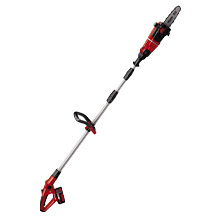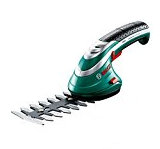Pruning shears purchasing advice: how to choose the right product
- The most important things in a nutshell
- Pruning shears are a versatile garden tool used primarily for pruning individual shoots and branches.
- The two most common types are the anvil shears and the bypass shears.
- Anvil pruners are suitable for hard, dry wood, while bypass pruners are ideal for flowers and fresh wood.
Garden shears – the must-have of every gardener
The inconspicuous secateurs are one of the most important tools for hobby gardeners. They are used to keep flowers and shrubs in shape and to cut smaller branches. Gardeners with an eye for detail cannot do without the small but powerful shears. Garden shears are also known as rose shears or pruning shears, as they are often used to care for these plants.
The secateurs are best suited for cutting thin branches, rose bushes and shoots. They are used where special care is required. After all, no gardener would cut his roses with hedge shears. For larger jobs like hedge trimming, on the other hand, pruning shears are not particularly well suited because they are simply too small.
Pruning shears and loppers – what is the difference?
Pruning shears are basically garden shears with long-handled handles. These not only give the shears a longer reach, but also greater leverage and thus more power when cutting. Pruning shears can be used to cut thick branches that garden shears cannot.
Anvil and bypass – how pruning shears work
Depending on the trees and plants in your garden, there are different pruning jobs to be done. There are two common operating principles for pruning shears: Anvil and Bypass. If you plan to prune fruit trees, you will need an anvil pruner. For the care of roses or the cutting of flowers, a pair of bypass shears is recommended. Basically, it is advisable to have both shears.
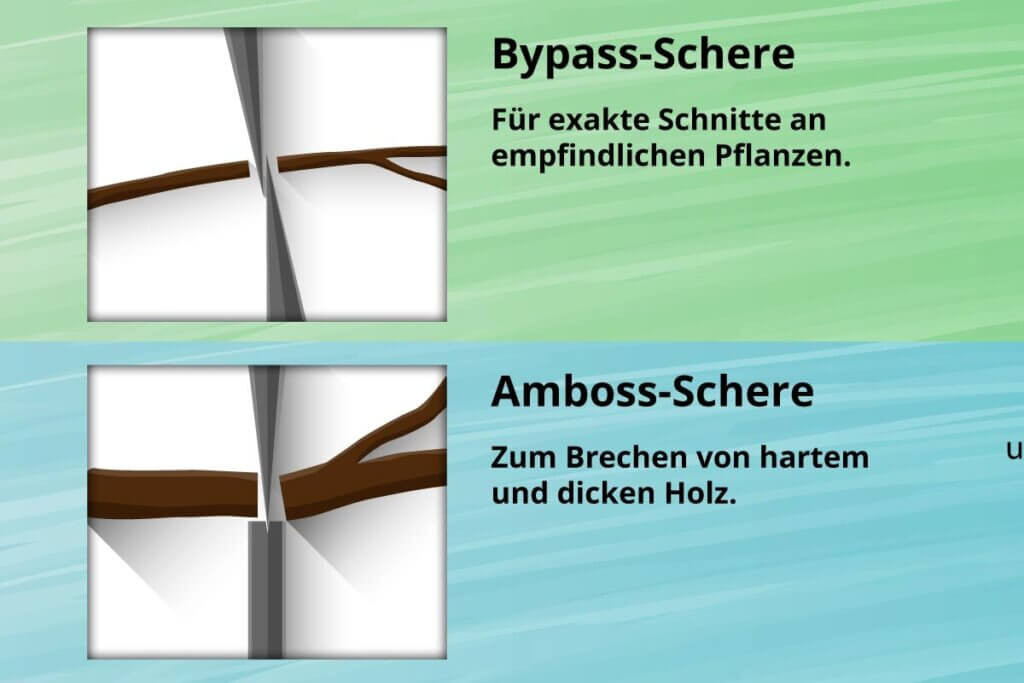
Anvil scissors
Anvil shears have only one cutting blade, which meets a metal or plastic surface on the other side. This “anvil” creates the counter-pressure necessary for cutting through branches. As the plant parts are pressed into the blade during cutting, the cut is unclean and the injury to the plant is great. Therefore, the anvil shears are mainly used for cutting dead branches. Because of the better power transmission, they are also used for thicker branches that are difficult to cut with the bypass shears. The anvil pruner is a specialist for topiary and thinning out plants.
Bypass shears
The bypass shears have sharp blades that run past each other. They are perfect for fine work, for example when pruning rose bushes. Green wood and fresh shoots with a diameter of up to two centimetres can be cut cleanly, thus protecting the plant as it can close the smooth cuts better. However, the bypass shears tend to jam when a lot of force is applied. They are therefore less suitable for rough work.
What you should look for when buying pruning shears
Pruning shears are part of the basic equipment for gardening. Accordingly, they are used frequently. They should therefore not only cut effectively, but also be comfortable to hold, because calluses and blisters easily form on the hands during intensive use.
Cutting thickness – maximum branch thickness
The cutting thickness describes the maximum branch diameter that a pair of scissors can cut through. For example, for a branch 15 millimetres thick, you need secateurs with a cutting thickness of 15 millimetres or more.
Shears with a high cutting strength are more versatile in the garden. They may be too large for particularly fine work. Commercially available garden shears with a cutting thickness of 10 to 25 millimetres are sufficient.
The handle – decisive for comfort
The quality of the handle is an important criterion when buying pruning shears, because this is where the power is transmitted. It must therefore fit the hand well and securely. A pruning shears handle is usually made of plastic.
A handle width that fits your hand is a guarantee for comfortable work. Many models you find in the shops are designed for medium to large hands. Some manufacturers offer models in different sizes. With some pruning shears, it is also possible to adjust the handle width manually. They then have a regulator with different levels. Other models have a screw that can be used to adjust the handle width continuously.
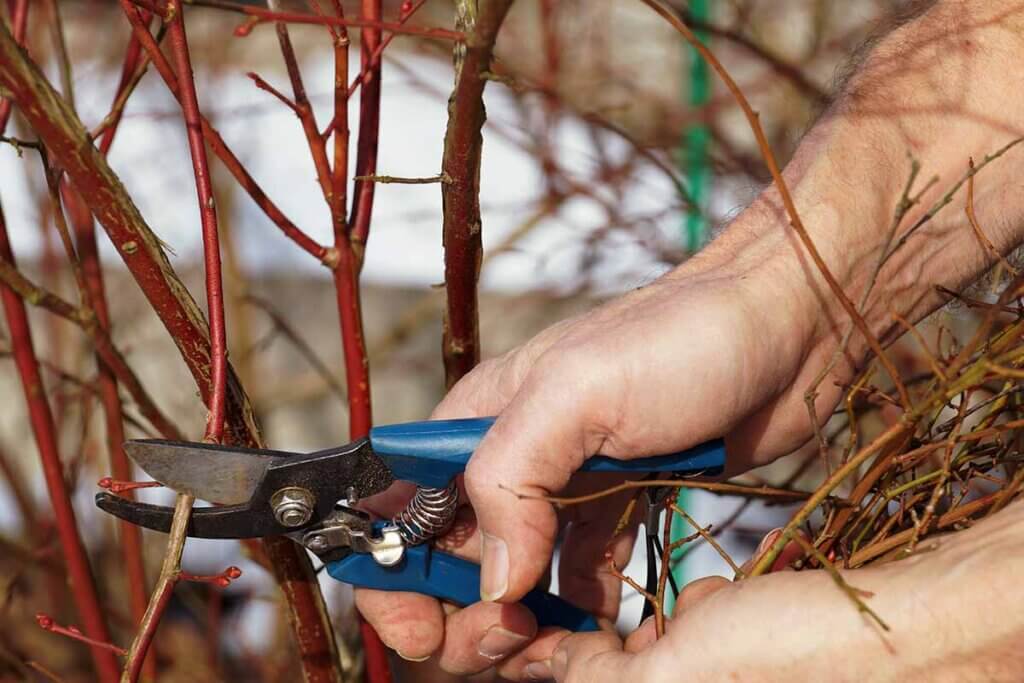
When working with pruning shears for a long time, the hand may become cramped. The constant friction in the same places can also cause blisters to form on the skin. For lengthy cutting work, it is therefore advisable to use scissors with a rolling handle. In such a model, the lower handle is not fixed, but is mounted in a rolling manner. As a result, there is less friction on the skin. Winegrowers who do a lot of pruning swear by this type of handle.
Left-handers also face the problem with secateurs that the tools are designed for right-handers. They can only use the shears with difficulty and with increased effort. Some manufacturers address this problem by developing handles that are comfortable to grip for both right- and left-handers.
Ratchet function – relief for the hand
Prolonged work with pruning shears puts a lot of strain on the hand. Shears with a so-called “ratchet” save the gardener a lot of effort when cutting – especially in the case of thicker branches. The ratchet mechanism allows a branch to be cut in several steps. When activated, a so-called knee lever engages in a notch and prevents the shears from opening completely again. The gardener can then simply push in the next step. Since cutting is done in several steps, less force is needed to cut through a branch.
Total length of the shears
Garden shears are not pruning shears, but their length is not unimportant. They usually have an overall length of 15 to about 30 centimetres. Small pruning shears are particularly advantageous in densely overgrown areas. If, for example, you want to reach into a rose bush to remove a particular branch, a large pair of shears is more of a hindrance.
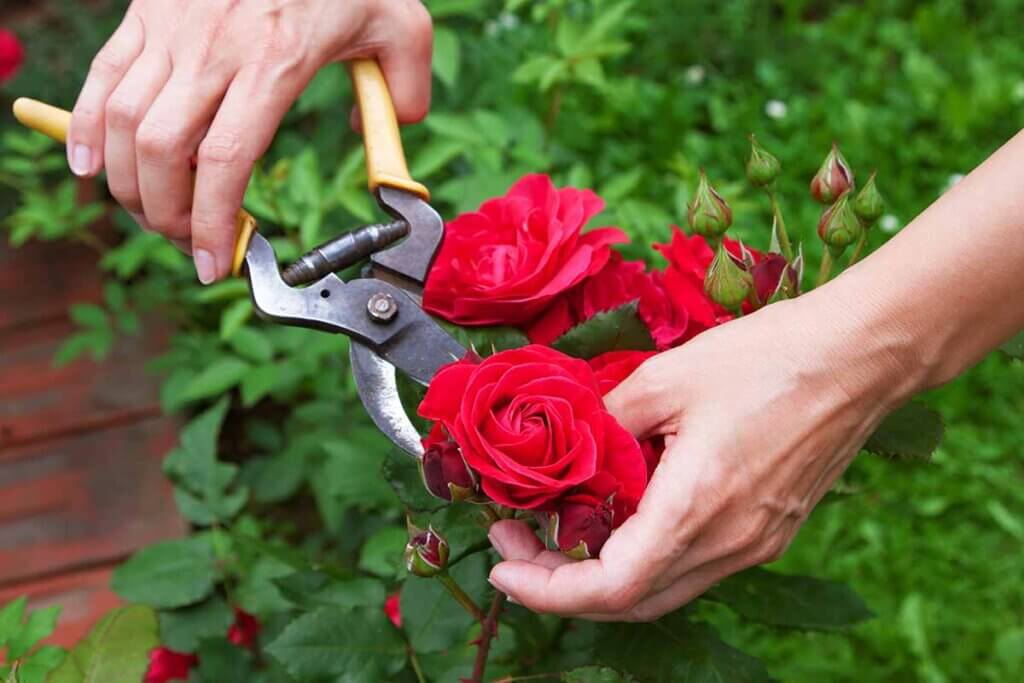
For rough work that requires a lot of strength, long scissors make cutting easier. Longer handles mean more leverage. If you grip the scissors at the back, you work particularly effectively. However, users with smaller hands are at a disadvantage here, as a large pair of scissors is not so easy for them to grip.
Safety aspects
Garden shears have sharp blades, and the bypass shears are also pointed. Because of the spring mechanism, the garden tools would remain open when not in use. Therefore, the shears have a locking function that keeps them closed. The blades are locked by a slide switch, which is located on the upper handle and can be easily reached with the thumb. The mechanism must also prevent the scissors from springing open if they fall to the ground. An unreliable locking function is a glaring shortcoming in pruning shears.
The workmanship of the handles also plays a role in safety. Poorly made handles have sharp edges or places where users can jam their fingers. Therefore, make sure you buy a product that has been tested by TÜV or has the GS mark for “tested safety”.
Wear gloves when gardening
To protect your hands, it is always advisable to wear protective gloves when gardening. When using pruning shears, gloves prevent blisters from forming and protect your hands from the blades on the one hand and from sharp branches and thorns on the other.
Further equipment details
Some secateurs can do more than just cut flowers and branches. They have other features that extend their range of functions. As a rule, such pruning shears are somewhat more expensive than ordinary versions.
Wire cutters
Wire has many uses in the garden. It is used to fix branches and shrubs or to tie flowers together. A wire cutter is therefore a welcome extra in a pair of garden shears. In the back of the upper blade there is a small notch through which the wire is cut. This prevents the rest of the blade from being damaged by cutting metal.
Juice groove
When cutting, pruning shears inevitably come into contact with plant juices. After a while, these can gum up the blades of the shears. A sap groove takes care of this problem by draining away the liquid.
Shock absorbers
Some pruning shears have shock absorbers and buffers. Especially when cutting thicker branches, they may give way quite suddenly. This can be painful for the wrists. The buffer absorbs the shock at the end of a cut and thus protects the hand.
Colour
It may not be immediately obvious, but the colour of the secateurs should not be neglected either. A pair of shears with handles in signal colours such as red and orange is much easier to find than one with green or brown handles. This is particularly helpful if the pruning shears fall into a shrub, for example.
Non-stick coating
A non-stick coating not only reduces friction and enables more precise cutting, it also prevents cuttings from sticking to the shears.
How much do secateurs cost?
Garden shears with satisfactory cutting performance are available from about 10 euros. Sometimes cheaper pruning shears can be found in the shops, but here you should refrain from buying them. Poorly made pruning shears quickly become painful to use and cannot withstand the strain of cutting. Then, for example, the plastic handles break off. If you buy cheap garden shears, you often have to buy new ones after a short time.
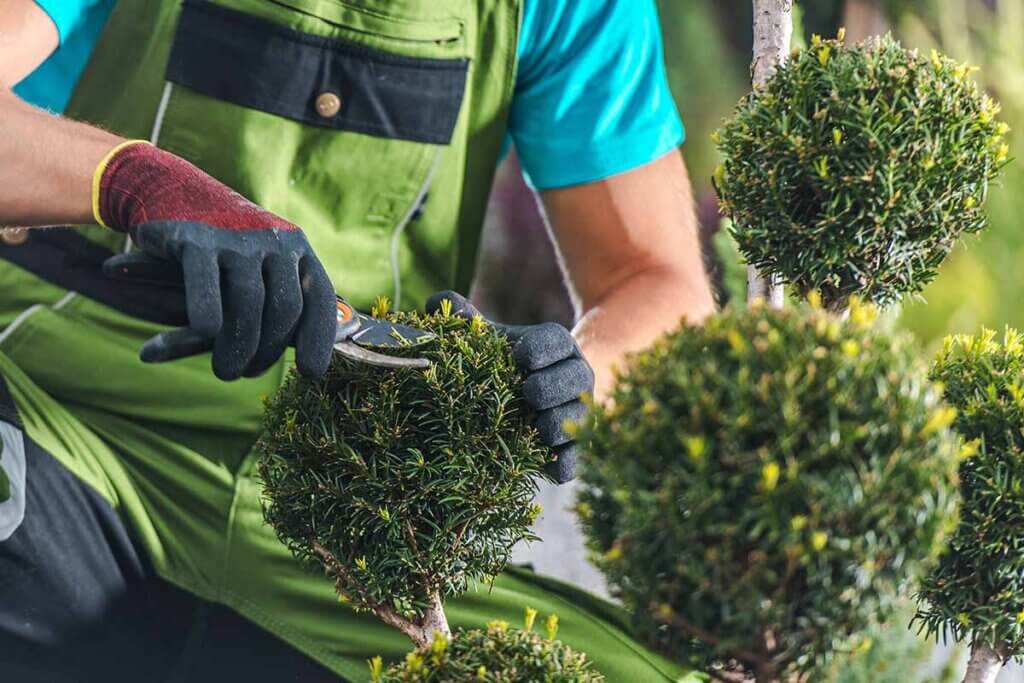
If you use your pruning shears a lot and therefore need a reliable tool, you should look in the price range of 20 to 40 euros. Shears in this price range are usually well made and have a good grip. In addition, pruning shears often have extras such as shock absorption. They are therefore not only more durable, but also more comfortable to use. If you do a lot of gardening, you should invest around 40 euros in a pair of secateurs.
Cleaning and care of the secateurs
It is advisable to wipe off the visible residue after each use of the shears. A pair of secateurs that has been in frequent use should be given a thorough cleaning once a year. Plant sap and other dirt will inevitably remain on them, which will impair the cutting result. A good time for extensive cleaning is in autumn, after you have already trimmed all the shrubs.
You do not need soap or other cleaning agents to clean pruning shears. Have the following items ready:
- A spanner or pliers
- A wire brush
- A cloth
- A coarse whetstone
- A fine whetstone
- Oil
First, use the wire brush to remove the coarse dirt from the pruning shears. Then clean the spring. On many models you can remove the spring, which makes cleaning easier. To clean the blades, loosen the screw that holds both parts of the shears together. Depending on the type of screw, you may need a spanner, a screwdriver or pliers to do this. It is not absolutely necessary to take the scissors apart, but then they cannot be cleaned as effectively. Now take the large whetstone and clean the blades with circular movements. Keep the stone wet during the procedure. Then sharpen the pruning shears with the small whetstone. Make sure you work at right angles when sharpening. Then dry the scissors with a cloth. Finally, apply a little oil to the screw and the joints. The pruning shears will then be fully ready for use next year.

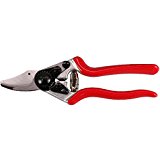
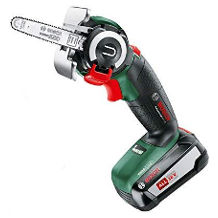
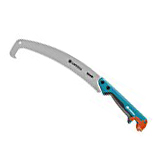
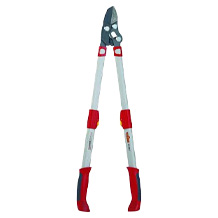
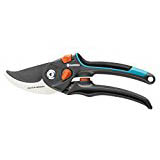

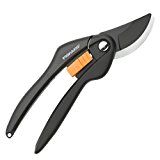
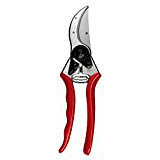

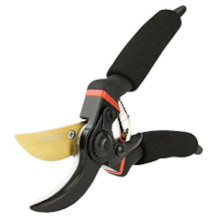
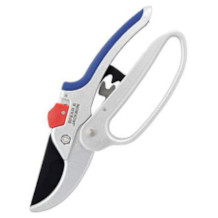
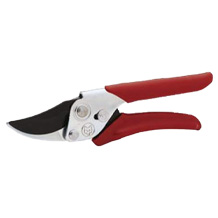
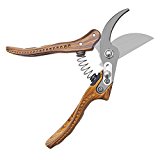
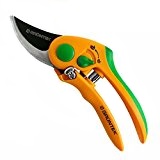
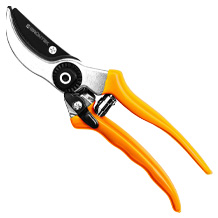
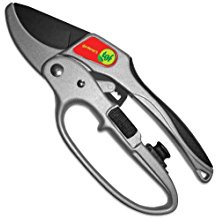

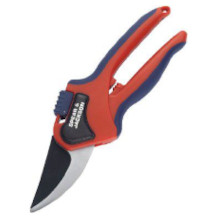

 13,368 reviews
13,368 reviews



